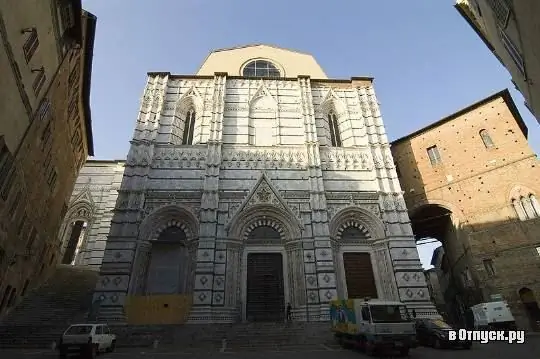
Description of the attraction
The Baptistery of San Giovanni is a religious building in Siena, located in the square of the same name near the city's Cathedral. The baptistery was built between 1316 and 1325 by the architect Camaino di Crescentino, the father of the Italian sculptor Tino di Camaino. The Gothic façade is unfinished at the top, as is the apse of the Cathedral.
Inside, in a rectangular hall divided into a nave and side chapels by two rows of columns, there is a hexagonal font made of bronze, marble and enamel, made in 1417-1431 by the main sculptors of that time - the great Donatello (his hand owns the "Feast of Herod" and statues of Vera and Hope), Lorenzo Ghierti, Giovanni di Turino, Goro di Nerocchio and Jacopo della Quercia (he sculpted a statue of John the Baptist and several other figures). In scenes depicting the life of John the Baptist, one can see his birth, the baptism of Christ, arrest, etc. On the sides there are six figures: Faith and Hope in 1429 by Donatello, Justice, Mercy and Providence by Giovanni di Turino, and Courage by Goro di Ser Nerocchio.
The marble ark on the font was designed by Jacopo della Quercia between 1427 and 1429. Five Magi in niches and a marble statuette of John the Baptist at the top are also his creation. Bronze angels spread their wings around: two belong to the hand of Donatello, three to Giovanni di Turino, and the sixth was made by an unknown master.
The frescoes that adorn the baptistery are by Vecchietta and the students of his school. He also painted two paintings on the wall of the apse, depicting Self-flagellation and Walking in agony. In 1477, the vaults of the apse were also painted with frescoes by Michele di Matteo da Bologna.






